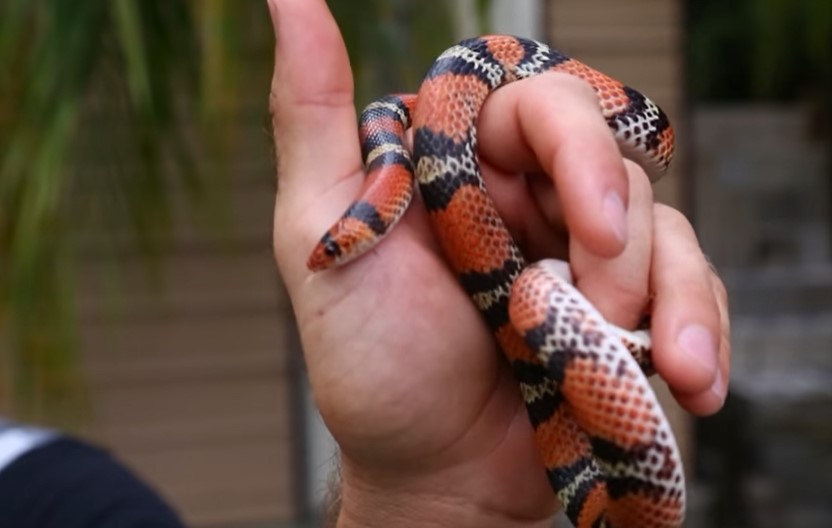
As the name suggests this is a snake which is commonly found in Florida, and it is a species that is having problems because of over collecting and the fact that it is often mistaken for the venomous coral snake. Although this species is generally harmless, its coloration has genetically developed in order to make it similar to the coral snake, but many people will kill the snake before identifying it. There is still a healthy population of the Florida Scarlet Snake (Cemophora Coccinea Coccinea) to be found in Florida, but it isn't found elsewhere.
The Florida Scarlet Snake is a relatively small snake, that will usually grow to between fourteen and twenty inches in length, with the longest recorded snake actually being thirty inches long. It will normally have an underbelly which is entirely white in color, with the rest of the snake being banded in red, black and white bands. The white bands will always be flanked by black bands, and red and white bands will not be found next to each other. This snake has a small head and an upturned nose which is a feature that will distinguish it from the similar Florida Scarlet Kingsnake.
The Florida Scarlet Snake can feed on a number of different animals, including other small snakes, lizards and rodents. It is a constrictor, meaning that it will kill its prey before consuming it. However, one of the favorite foods of this species is the eggs of other reptiles and snakes, which it will either eat whole or puncture the shell and eat the contents.
Behavior And Habitat
The Florida Scarlet Snake is mainly nocturnal, so human sightings are fairly rare, even though there is a significant population in Florida. During the day they will burrow into leaf litter or soil in order to get cover, or can even squeeze themselves under a log or stones in order to hide themselves for the daylight hours. They will occasionally be seen near roads during the night when they are most active. If they are caught by an individual, then they will often wriggle and twist constantly especially when they are being held in a defensive method to try and escape from the individual.
Because of their tendency to burrow and look for cover, these snakes will usually be found in areas that can offer loose soil or plenty of cover. This includes forests and wooded areas, especially pine flatwoods and hardwood hammocks, or areas of developed agricultural land and prairie.
Reproduction And Growth Cycle
Like most other snakes, the Florida Scarlet Snake's mating season is during the spring, and a clutch of eggs will then be laid in July or August. Most snakes in this species will lay a clutch of between three and eight eggs.
When the eggs hatch in September the hatchlings will usually be between five and six inches in length. They will then grow quite quickly until they reach their sexual maturity in one to two years.
Mimicry Of The Coral Snake
The Florida Scarlet Snake is one of two species of snakes in the state that have developed a coloring similar to the Coral Snake, which is a dangerous venomous species of snake. This is a defensive ploy, but now it is one that can make it a target when sighted by people who think it is dangerous. The reality is that the Florida Scarlet Snake is harmless to people, and should be left alone.
One way to distinguish between the Coral Snake and the Florida Scarlet Snake is to compare the coloring. The Coral Snake has yellow bands every other color, while the Florida Scarlet Snake has alternating black bands. This is why many people use the old saying to identify the venomous snake - ‘Red touch yellow, kill a fellow. Red touch black, friend of Jack.'
Go back to the pestcontrolsnake.com home page.
Copyright 2021 - pestcontrolsnake.com
Nationwide Snake Control